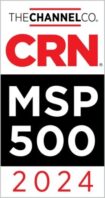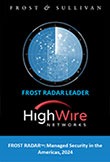By Charles Hughes, Chief Operating Officer.
This blog was published in CompTIA.
“Perfection is not attainable, but if we chase perfection, we can catch excellence.”—Vince Lombardi
“A good plan violently executed today is better than a perfect plan tomorrow.”—George Patton
The first two installments of this blog series (Part 1, Part 2) described an agile workforce by its benefits. Hopefully by now you are thinking of how to make your organization agile. During the journey to agility you will discover things that will improve the team professionally and personally. It will not be perfect, and will not mitigate all risk, but it will drive improvements. The agile organization is built on four foundational elements and one key component to bring them together. Here’s a closer look at each:
Transformational Culture
Change management is not transformation. The first is transactional and the latter is a process which permeates the DNA of the organization. Transformational culture changes the internal thought process of how and why we do things. We are not just fulfilling tasks; we are fulfilling a clearly defined vision. The path to that vision may change along the way so we follow guiding principles to stay aligned.
This requires clear communications and a unified plan to promote universal understanding. We ensure everyone understands why there is change and we reduce apprehension. This also develops transparency and accountability, two key aspects to create a healthy transformational environment. Accountability is multi-faceted; team members are accountable to their leaders, leaders are accountable to their teams, co-workers are accountable to each other. Accountability is a tool to guarantee positive outcomes even during adverse events. Transformation requires preparation of the team; you cannot just flip a switch. You must teach the team how to win and how to lose. Agile organizations treat success and failures as opportunities to continually improve performance.
Incorporate Gig Economy Service Models
Sometimes called contingent labor or the uberization of labor on demand, the Gig Economy (GigE) service model incorporates multiple ways of delivering service. It is not an all-or-nothing model, it is a combination of cloud-based services, with fixed based support, W-2s, partners and 1099 workers. You may even have to rebalance on a case-by-case basis depending on the current environment. Those that have been resistant to this change in the labor market need only look around at social distancing and the need to stay at home to realize the benefits of the GigE model.
A global pandemic can all but shut down the economy and an asset-heavy organization with high fixed costs requires a very healthy balance sheet to withstand this impact. Work internally and with partners to ensure you have the components necessary to exploit this support model. The agile organization which accomplishes this can quickly scale up or down to match the demand.
Adept Generational Management
We do not have a homogeneous workforce. Today’s worker comes from different cultural backgrounds and generational backgrounds. Managing the differences effectively will greatly improve your agility. This means modifying communications plans and leadership styles to adopt to how the different generations process information. You will need to use multiple channels-individual meetings, small groups, video conferences, emails, text messages and social media to address the organization. At the same time, you must ensure you send a consistent message and that everyone has similar understanding across the various mediums.
Maybe the most important reason we need to be agile is that the workforce demands it. Millennials and Gen Z are attracted to the agile environment. It is more common during the interview process to have candidates inquire about flexible hours, the ability to work remote and to have input on assignments and projects. They want flexibility and to be part of a cross-functional team focused on a specific outcome instead of routine tasks. These benefits weigh on how they value the overall compensation of the position.
Develop Accelerated Innovation Cycles
Innovation must be incorporated into innovative service offerings, exploiting new technology and developing new processes. You must learn to innovate daily, weekly and during a project or delivery cycle. After-action reviews (AARs) are important, but in-action reviews (IARs) are far more beneficial. AARs let you think about what you wish you had done or hope to do next time. IARs allow you to change what you are doing now and improve your operations while in flight. I mentioned earlier that we must teach organizations how to win and how to lose. This is subtle but important. An accelerated innovation cycle does not mean you will quickly find the next best idea or process every time, you will have setbacks and failures.
Agile organizations and accelerated innovation require that failure happen fast. Why spend six months to find out something does not work, wasting a great deal of time and energy? Adapt the mentality to fail fast so you can win faster. Look at how many companies switched operations start producing goods and services that support the fight against COVID-19. These companies will prosper while others struggle to get by. Agile companies can find new ways to deploy their capabilities for the betterment of the company and their customers.
Agile Leadership and the Helix
To develop these foundational elements and create a truly agile organization requires agile leadership. Notice I said leadership, not just leaders. Strong individual leaders are important to possess and demonstrate the traits and behaviors of an agile organization. But leadership references the team of leaders at multiple levels in an organization. Agility requires a balance of centralized and de-centralized command and control. Leadership must manage the GigE workforce with the generational differences effectively and fairly.
The flat structure of the agile organization means broader spans of control and changing nodal teams that are working on different objectives at different times. This can be a lot to ask of the most seasoned leader. Leadership needs to shift from the single source of authority and develop a tandem approach, thus the helix. Think of a strand of DNA: two separate strands but fully connected and integrated providing various sets of instruction to the body. The leadership helix can operate the same way: two closely connected leaders with different responsibilities over the same organization.
Maybe an easier analogy is the structure of commissioned officers and non-commissioned officers (NCOs) in the military. NCOs are responsible to make sure their troops are trained, equipped, physically and mentally ready to execute the mission of the team. Commissioned officers are charged with developing the strategy on how, when, and where the mission will be carried out. This is extremely effective because the NCO can focus on the people and how things are done. The commissioned officer can focus on the operations, or “the what,” to ensure the mission is executed.
In the civilian world, “the how” encompasses employee development, processes and standards and ensuring functional quality. “The what” entails establishing day-to-day operations, creating value, and improving the customer experience. This delineation of duties ensures optimal readiness for the known mission and the ability to quickly transition to the new mission.
Conclusion
This concludes this blog series, but only scratches the surface of agility as an organizational construct. There is much more that can be discussed and implemented. The most important thing for you as a leader to do is start. Understand the need, put forth the effort and never quit. The good thing is there is not just one way to achieve agility. You have freedom to experiment and find what works best for your situation. Think of these installments as a high-level overview. Now go out, develop, and execute your own plan for agility and remember—plan to change direction as often as needed.
This is the third of a three-part series examining the benefits of an agile workforce. Read Part 1 and Part 2 here.









Leave a Reply